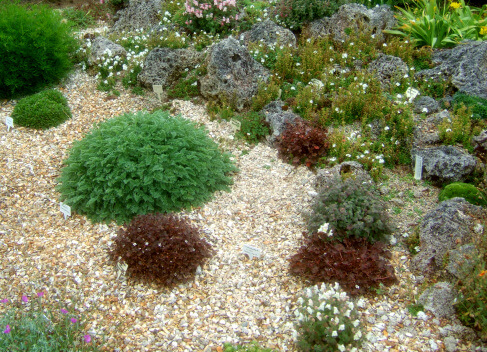
10 Reasons to Use Gravel Mulch
Elsewhere we’ve discussed the marvels of organic mulches, the options available and ways to use them to conserve water, reduce maintenance requirements and spruce up your landscape. To balance the scales, let’s take a moment to focus on the unique qualities of gravel.
If you’re working to conserve water, gravel mulches are a good solution. In fact, agricultural studies have found they effectively:
1. Moderate soil temperature
2. Increase moisture retention
3. Slow evaporation
4. Decrease wind and rain erosion
5. Reduce runoff
That’s quite a list of advantages, but there are more. For example, gravel mulches also:
6. Last longer and don’t need to be replaced as often
7. Come in a range of sizes, colors and shapes to suit different needs
8. Work well on slopes and hillsides
9. Are easier to keep clean
10. Discourage pests
Gravel costs more initially, but that investment quickly pays off. Organic mulches break down and need to be replaced every year or so, but gravel lasts indefinitely. Thick layers of organic mulch offer a cozy habitat for insects and serve as a winter hibernation spot for rodents such as mice and voles, but many of these pests avoid gravel.
It’s important to tailor gravel types and installation methods to suit your primary objectives:
If your goal is to block weeds and accent plant beds, apply smaller gravels (pea gravel, fine rock) in layers 1 to 2 inches deep. If you want to conserve water and maximize moisture retention, opt for layers 3 to 4 inches deep.
If you choose to use larger, more irregular river rock or crushed rock, apply it in thicker layers. Use 2 to 3 inches for general purposes and between 4 and 6 inches for maximum water-saving benefits.
Generally, it’s best to install gravel over a layer of weed-blocking fabric to keep it from settling into the soil and use edging to control and contain it. To offset settling and keep gravel looking fresh, periodically have mulched areas top-dressed. For slopes and hillsides, opt for larger, chunkier shapes that grip the soil and stay in place. Some studies have found a mix of gravel and sand can boost moisture retention in certain settings, so this is an option you might want to discuss with your landscaper or gardener.
Any properly installed mulch will help conserve moisture, reduce runoff, smother weeds, decrease pesticide use, promote healthier plants and save money in the process. Gravel mulches accomplish these outcomes, too, but they deliver a host of additional benefits to maximize your investment.